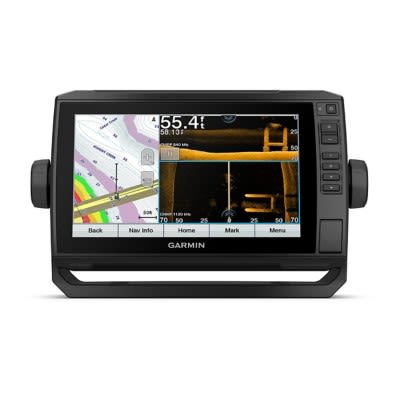Today's Best Fishing Times
Get the best fishing times for Snaptail Lake with Lake-Link's Fishing Forecast. SEE MORE
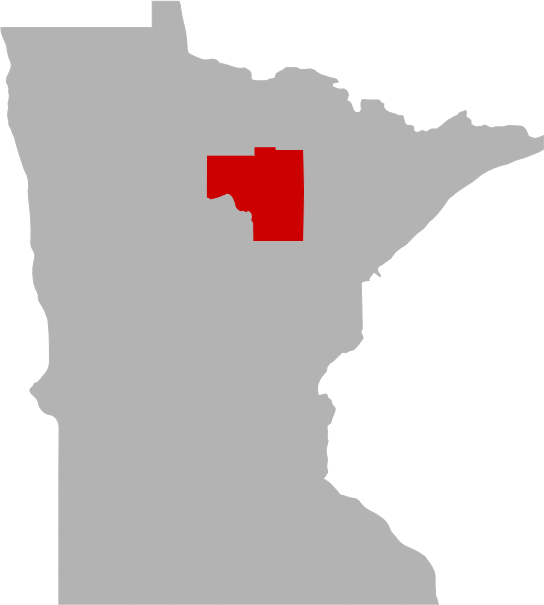
Share your catch!
We want to see what you've caught on Snaptail Lake.Frequently Asked Questions About Snaptail Lake, MN
- How big is Snaptail Lake?
- How deep is Snaptail Lake?
- What kind of fish can you catch in Snaptail Lake?
- What are the closest cities to Snaptail Lake?
- Are there places to stay in the Snaptail Lake area?
- Are there places to eat and drink near Snaptail Lake?
- What is the average air temp for Snaptail Lake?
- Are there any state parks near Snaptail Lake?
How big is Snaptail Lake?
How deep is Snaptail Lake?
What kind of fish can you catch in Snaptail Lake?
Other fish species in the lake include Blackchin Shiner, Bluntnose Minnow, Cisco (Tullibee), Golden Shiner, Hybrid Sunfish, Johnny Darter and White Sucker.
What are the closest cities to Snaptail Lake?
Are there places to stay in the Snaptail Lake area?
More Lodging Options
Are there places to eat and drink near Snaptail Lake?
Explore the Snaptail Lake area in a RV
Are you looking for an adventurous vacation option that won't break the bank? Look no further than renting an RV! Contrary to popular belief, the process is much simpler than you might imagine. With just a few easy steps, you'll soon be experiencing the ultimate freedom and convenience of exploring the open road in your very own recreational vehicle. And the best part? RV travel can save you up to 60% compared to other types of vacations! With the money you'll save, you'll be able to travel even more and create unforgettable memories along the way. So why wait? Start planning your next adventure today with an RV rental. Learn more about renting a RV.
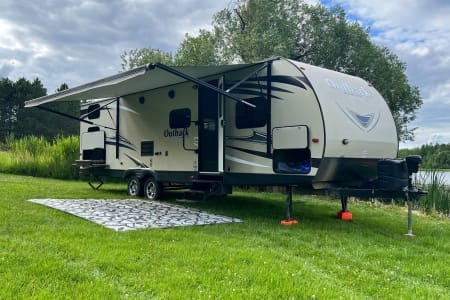
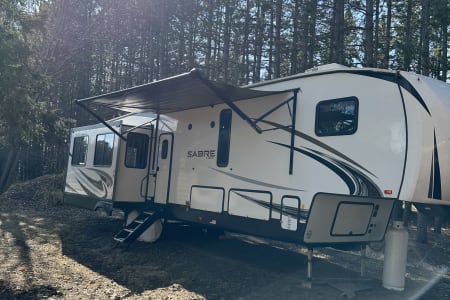

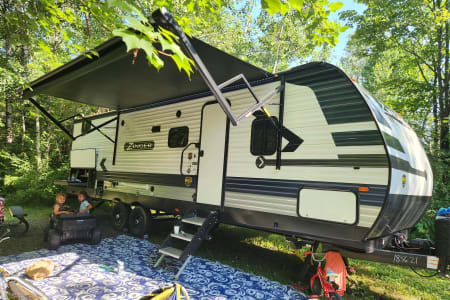
History & Status of the Fishery
Background
Snaptail Lake is located 12 miles north of Bovey, Minnesota in the Mississippi River watershed. Snaptail Lake has a total surface area of 146 acres and a maximum depth of 70 ft. The lake is moderately clear with Secchi disk transparency from 8.0 to 13.0 ft. The lake has soft water with low phosphorus fertility. Lakes with soft water and low phosphorus fertility typically produce limited fisheries characterized by slow growing fish. The lake has one inlet and one outlet, both are intermittent. The lake supports a diverse aquatic plant community that provides valuable habitat for fish and wildlife. There is considerable lakeshore development on Snaptail Lake and much of the available shoreline has been developed. There is a state owned public access on the south shore.
The fisheries lake management plan (LMP) for Snaptail Lake was last revised in 2002. Northern pike, largemouth bass, and black crappie were the primary management species identified in the plan. The long range goals included maintaining the largemouth bass night electro-fishing catch rate at >30 per hour with 40% exceeding 12 inches, maintaining the northern pike gill-net catch rate at 5 per net with 50% exceeding 21 inches and maintaining the black crappie gill-net catch rate at 2 per net.
Assessment Results
A lake population assessment of Snaptail Lake was conducted in the summer of 2010. Night-time boat electrofishing was conducted for largemouth bass in late May. Test netting consisting of 6 gill net and 9 trap net sets was conducted in mid June. Snaptail Lake was also included in near shore IBI sampling conducted in June and August.
Largemouth bass were captured at a rate of 86 per hour during night electrofishing, exceeding the long range catch goal of the LMP. The catch rate was high compared to other lakes in the area. Size structure was moderate as lengths ranged from 4.3 to 16.9 inches with a mean length of 11.5 inches. Few fish exceeded the angler preferred size of 15 inches, however. Seven year classes were identified and recruitment appeared somewhat inconsistent. Growth was slow and individuals typically exceeded 12 inches in 6 years. The population was dominated by relatively old individuals as the average bass was 5.5 years old and 71% of the sampled fish were age-5 or older. A high proportion of older fish may suggest low mortality of larger individuals, high recruitment in the past, or poor recruitment in recent years. Young of the year (YOY) largemouth bass were the most common fish captured in the near shore IBI sampling suggesting good natural reproduction in 2010. Good angling opportunities likely exist for small bass given the relative abundance and size structure. The lack of individuals exceeding 15 inches may limit the popularity of the fishery. Anglers should consider harvesting bass less than 13 inches.
Northern pike was the most common fish in the gill net sample and the catch rate was near the LMP long range goal. The catch rate was average compared to similar lakes, and average compared to past assessments on Snaptail Lake. Lengths ranged from 17.3 to 31.9 inches and averaged 23.1 inches. Few fish exceeded 28 inches. Growth was near the statewide average with individuals exceeding 21 inches in 4 years and 28 inches in seven years. Most pike were relatively young, averaging 2.7 years of age. Only 12% of the sample exceeded age 5. Low numbers of older individuals are often associated with high mortality of larger, older fish and may indicate relatively high angler harvest of quality sized fish. Snaptail Lake has the potential to produce more large pike and quality size structures have been documented in some past assessments. Anglers should be encouraged to release pike exceeding 24 inches to help improve the size structure.
Black crappie was the second most common species in the gill net sample and the catch rate was near the long range goal of the LMP. Both gill net and trap net catch rates were within the expected range when compared to similar lakes and near average for Snaptail Lake. It should be noted that similar lakes do not typically support large crappie populations. Gill net caught crappie lengths ranged from 4.2 to 10.7 inches with an average length of 7.2 inches. Trap net caught crappie lengths ranged from 6.8 to 10.1 inches with an average length of 8.5 inches. Approximately 10% of the sampled crappie exceeded 10 inches. Five year classes were present and recruitment appeared inconsistent as the 2006 year class comprised nearly half of the total sample. Inconsistent recruitment of black crappie is a common life history trait for many populations, often resulting in "boom and bust" angling cycles. Growth was relatively slow as individuals typically exceeded 8 inches by age 5. The popularity of the crappie fishery may be somewhat limited by slow growth, relatively low abundance, and small average size.
Lakes with similar characteristics to Snaptial typically produce high density bluegill populations characterized by slow growth and undesirable size structures. Bluegill was the most common species in the 2010 trap net sample and was typical for similar lakes. Snaptail Lake has a history of very high bluegill catches and the 2010 catch was below average for the lake. Size structure was undesirable as bluegill lengths ranged from 3.0 to 8.2 inches with a mean length of 5.2 inches. Only 34% of the sampled individuals exceeded 6 inches. Age analysis identified 8 year classes and recruitment appeared relatively consistent. Growth was average for the lake class with individuals exceeding 6 inches in 7 years. Good angling opportunities likely exist for high catches of small bluegill, but the lack of individuals exceeding 6 inches may limit the popularity of the fishery. Although angler interest may be limited, bluegill appears to be an important prey species in Snaptail Lake.
Lakes with similar characteristics to Snaptial do not typically produce high walleye populations and Snaptail Lake is no exception. Walleye were captured at a rate of 0.5 per gill net in 2010, near the Snaptail Lake average. Walleye were generally large, ranging from 18.3 to 23.6 inches.
A shifting prey base may be a limiting factor for gamefish production in Snaptail Lake. Prior to 1988, the lake supported a relatively robust population of tullibee. Tullibee had not been sampled since that time. Although the cause of the apparent tullibee extirpation is not clear, the decline coincided with a period of water quality issues that have since been addressed. Yellow perch are often an important prey species for northern pike and walleye. Perch catches have been extremely variable but have declined in the past 4 assessments. The catch rate in 2010 was well below the lake average. Other prey species such as golden shiners and white sucker were captured in relatively low numbers.
Snaptail Lake supports a diverse fish community. Other species sampled included: bowfin, brown bullhead, hybrid sunfish, pumpkinseed sunfish, rock bass, yellow bullhead, Johnny darter, blackchin shiner, and bluntnose minnow.
Past assessments identified two exotic invasive species in Snaptail Lake. Purple loosestrife is a wetland plant from Europe and Asia that was introduced into the east coast of North America in the 1800s. Purple loosestrife invades marshes and lakeshores, replacing cattails and other wetland plants. The plant can form dense, impenetrable stands which are unsuitable as cover, food, or nesting sites for a wide range of native wetland animals. The Chinese mystery snail is native to Asia. It was brought to California in 1892 as a food source and found in Massachusetts in 1915, likely from an aquarium release. Chinese mystery snails can form dense aggregations and disrupt native populations. Snail die off are often considered a nuisance by landowners as dead snails litter the lakeshore. Chinese mystery snails were noted to be very abundant in the 2010 survey. Anglers and boater are reminded to remove any plant material from their boat or trailer prior to leaving the lake. All live wells and bilges must be drained of water. It is unlawful to transport aquatic plants or water from Minnesota lakes and streams.
The protection of water quality and habitat is critical in maintaining or improving fish and wildlife populations. Unfortunately, human activities often negatively impact our lakes. Fertilized turf-grass lawns and failing septic systems along with the removal of shoreline and aquatic vegetation, mowing to the shore, and installing sand blanket beaches result in destabilized shorelines, uncontrolled erosion, and increased run-off, contributing excess nutrients and sediment to the lake and degrading water quality and habitat. By understanding the cumulative impacts of our actions and taking steps to avoid or minimize them, we can help insure our quality water resources can be enjoyed well into the future. Anglers can further help insure quality fishing by practicing selective harvest and catch and release.
What is the average air temp for Snaptail Lake?
Are there any state parks near Snaptail Lake?
For more Minnesota State Park information see our State Park Guide.
More Nearby Lakes To Explore
There's more lake's to explore around Snaptail Lake...| DISTANCE | ACRES | MAX DEPTH | |
| Bass Lake | 2.1 mi | 131 | 43 ft |
| Lawrence Lake | 2.3 mi | 437 | 32 ft |
| Camerton Lake | 2.4 mi | 95 | 7 ft |
| Lower Balsam Lake | 2.5 mi | 259 | 29 ft |
| Crooked Lake | 2.7 mi | 465 | 60 ft |
| Thirty Lake | 3.2 mi | 121 | 14 ft |
| Trestle Lake | 3.3 mi | 88 | 48 ft |
| Unnamed Lake | 3.5 mi | 53 | 15 ft |
| Upper Hanson Lake | 3.5 mi | 131 | 35 ft |
| Nashwauk Lake | 3.7 mi | 159 | 53 ft |






